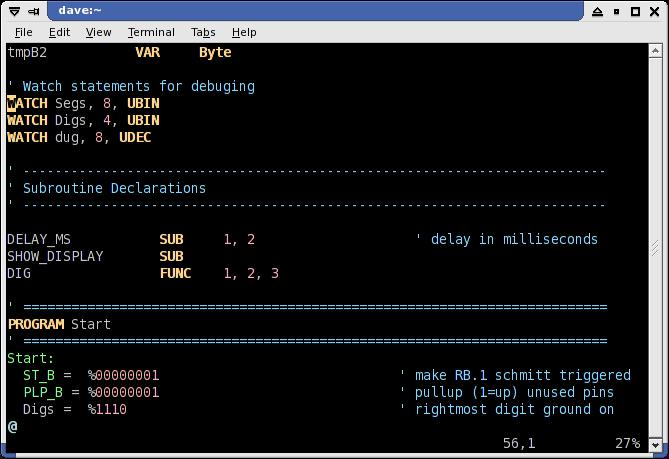I threw together some SX/B syntax highlighting for VIM.
I wrote up a nice web page about it
->Here<-
It includes installation instructions. Its just a version 1.0, stay tuned for updates.
Please check it out for additional details. Here is the obligatory screen shot.


Comments
I assume that VIM allows you to call external programs, right? If so, you can call the IDE from it to program and debug SX chips using the SX-Key. Here are the details:
NOTES ON COMMAND LINES AND SWITCHES:
Any command line must have any switches first and then be followed by
the full path and name of the file to load. The order of the switches is unimportant
as the SXKey parses and executes them in the order necessary to achieve
the desired goal.
This new version of the SXKey implements the following CASE SENSITIVE
switches:
/b = ByteCraft mode. This is the old method of loading and debugging a
.COD file. It is present for legacy support ONLY and should NOT be used
as the new switches provide much more control.
/r = Treat the loaded file as read only. Not needed for .COD files as
they are automatically considered read only.
/d = Use passed file name to program the chip for debugging and then
start the debugger.
/da = Assume the passed file is already burned into the chip and just
start the debugger.
/p = Use passed file name to program the chip for standalone operation.
After programming, the SXKey must be removed and any necessary
external oscillator attached as needed.
/h = Hide the editor so we only see any programming status boxes as
needed and the debugging GUI.
/cd = Debug the command line. Displays a dialog showing what it is going to execute and in what order based on the switches on the command line. When you press "OK" it then executes what was on the dialog.
Thanks,
PeterM